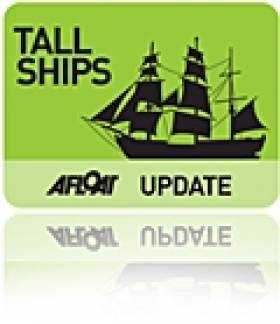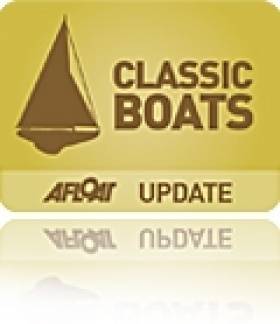Displaying items by tag: Radio Documentary
Radio Documentary Online: The "Dream of Jeanie", Her Return to Sea?
#RadioDocumentary - A Newstalk documentary by radio producer and archaeologist Jane Ruffino looks at the past, present and future of the Jeanie Johnston Tall Ship in "The Dream of Jeanie" which was broadcast this weekend.
The barque, Jeanie Johnston, a 19th replica famine and emigrant museum ship has been part of Dublin’s skyline since 2004, a year after her voyage to the eastern seaboard of the USA and Canada.
She was built at the turn of this century, in Blennerville just outside of Tralee, Co Kerry, a project that took nine years to complete. Originally planned at a cost of £4m, the final cost was nearly €14m, and for a long time, was used as shorthand for poor planning and parochial thinking.
The one-hour radio documentary interviews prominent crew members and those involved in her construction and how the Jeanie came to be in Dublin, plus asks should there more done to get her back to sea?
John O'Neill, manager of Aiseanna Mara Teoranta, which operates the vessel on behalf of owners, Dublin Docklands Development Authority (DDDA) discussed her future which as previously reported on Afloat.ie had undergone a dry-docking maintenance programme last October.
As the Jeanie has not been to sea for some time, there remains further work to do before she is fit to return to sailing, including as also reported, the replacing of timbers at the stern transom.
Despite this work which is been carried out while moored at her usual Liffey city centre berth at Custom House Quay, visitors can still come on board for 50 minute guided tours.
O'Neill added, there’s also the need to have the Jeanie re-certified as an a sea-going vessel which is done under survey with the Department of the Marine.
There is also the issue of scheduling and timing towards bringing her back to sailing again, which O'Neill explained is always their ambition.
In the meantime while running as a museum which has seen increased visitors last year, this has helped to self-fund the vessel in her current role with the aim towards that of a sail-training vessel.
If you missed the ‘The Dream of Jeanie’ which was first broadcast on Newstalk 106-108fm there’s still a chance to hear online with a podcast available by clicking HERE.
Special Radio Documentary: An Asgard
#Asgard – As the centenary anniversary of the Asgard's arrival at Howth Harbour approaches this weekend as previously reported on Afloat.ie, a special documentary is to be broadcast on RTE Raidió na Gaeltachta to mark the historic event.
The programme to be aired at 11am this Thursday, examines the historical impact of the yacht owned by Erkine Childers which landed a cargo of arms on 26 July 1914 for the Irish Volunteers that included rifles and ammunition.
A series of events marking the momentous event 100 years ago and that of the subsequent loss of life at Bachelors Walk will take place on Sunday 27 July.
Among the events taking place in Howth Harbour see the President Higgins will join Minister Humphreys to address and lead the official commemoration ceremony by the Defence Forces at the north Co. Dublin harbour's East Pier from 11.30am.
Following that, from 1pm the Asgard 100 Community Group will stage a re-enactment of the landing of arms, featuring a replica of the yacht Asgard and a flotilla of boats observed by President Higgins.
Local volunteers from the Howth GAA Club and marching volunteers from Dublin will unload and leave the pier with the consignment.
Historical context to the events of that day in late July 1914 will be provided by members of the Asgard 100 group throughout the proceedings.
For more details of all the events organised for the day, visit this link.






























































